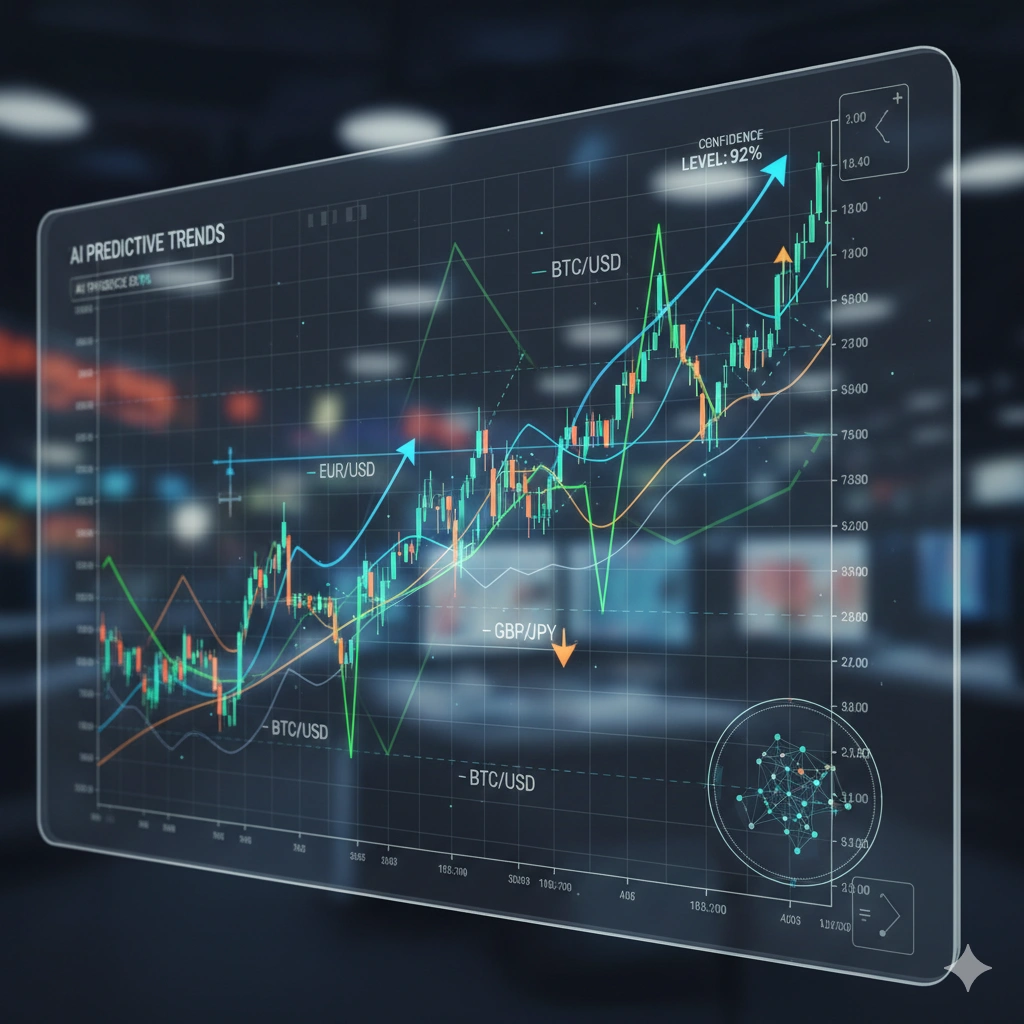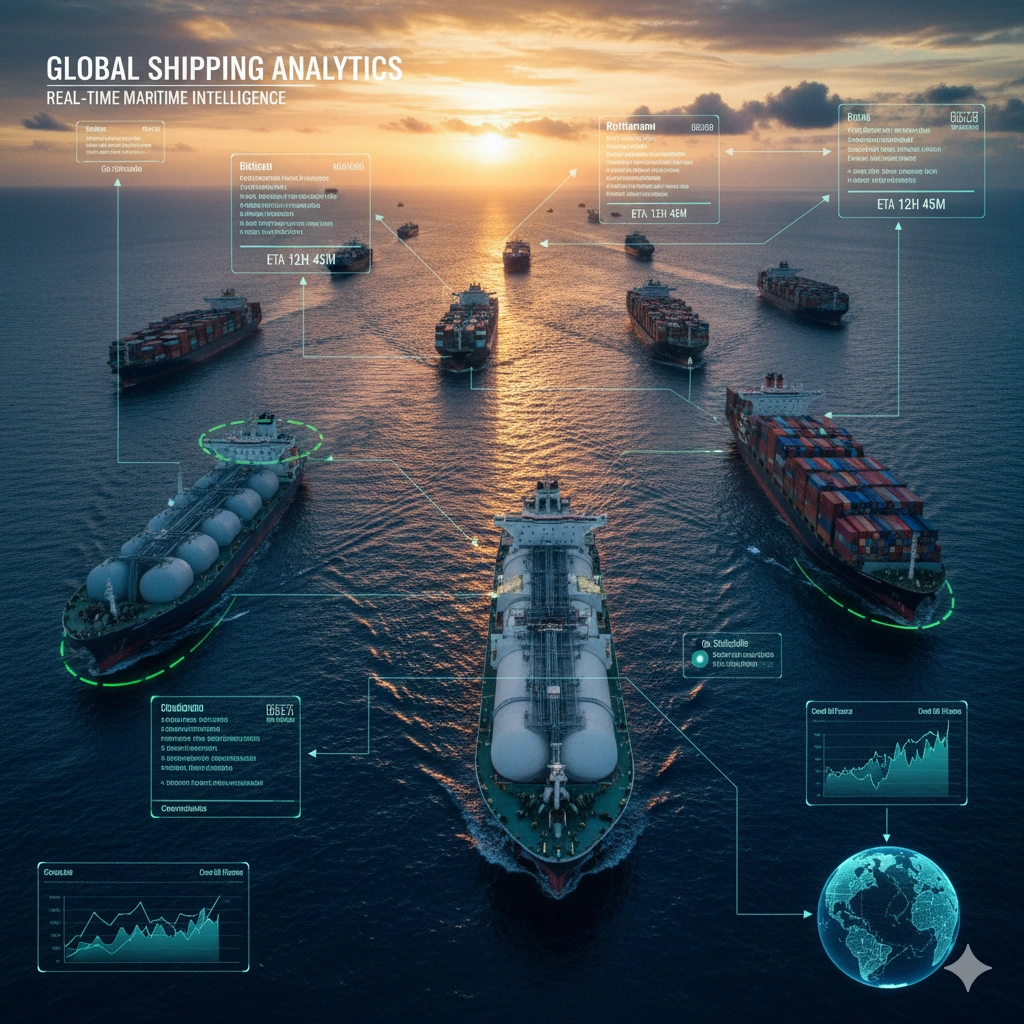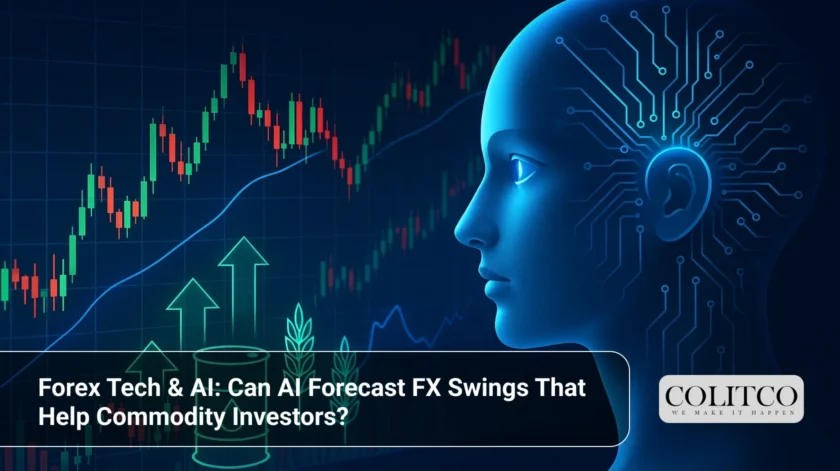Forex Tech & AI is reshaping the way global investors analyse foreign exchange swings and commodity price movements. With trillions of dollars traded daily in the FX market, predictive accuracy is crucial for both traders and commodity investors. The adoption of machine learning and generative AI is moving beyond experimental use to become a core tool for identifying trading signals and managing risks.
AI spreads its wings in the forex trade
The adoption of AI in the foreign exchange is enhancing according to the recent research and industry surveys. To detect the patterns, predict price changes and sentiment in large datasets, reports indicate that banks, brokers, and institutional traders are using AI.
 Artificial intelligence tools are reshaping foreign exchange forecasting.
Artificial intelligence tools are reshaping foreign exchange forecasting.
A 2025 study of pricing shock prediction in commodities established that economic news conditioned with machine learning models performed much better in predictive power, as it had a stronger predictive signal than the actual price data.
Traders of Commodities resort to Data and AI
Big trading companies, such as Vitol and Trafigura, are increasing their use of AI and big data to enhance the analysis of the market. According to a report by the Financial Times, these companies have been increasingly leveraging AI-driven forecasting, and this has allowed them to gain a competitive edge in price setting.
 Commodity giants like Vitol and Trafigura rely on AI and big data for market forecasting.
Commodity giants like Vitol and Trafigura rely on AI and big data for market forecasting.
In the case of commodity investors, the convergence of AI and FX forecasting is very essential since fluctuations in the currency directly determine the cost of its operations, international trades, and commodity prices.
Central Bank Indications and More Quick Reactions
Artificial intelligence is also changing the market reaction to monetary policy. In a recent news story published by Reuters, the US Federal Reserve Vice Chair, Philip Jefferson was quoted saying that AI is increasing investor responsiveness to central bank communications.
 AI accelerates investor reactions to central bank policy updates, influencing FX volatility.
AI accelerates investor reactions to central bank policy updates, influencing FX volatility.
Market actors are faster processing and taking actions based on speeches or policy changes, thus making the FX volatility. To the commodity investors, the changes impact on the hedging strategies and exposure to raw material prices based on the change in currency.
Sentiment Analysis and Bots to Trade
AI-driven sentiment analysis is a new trend in market forecasting forex swings. Banks are also applying AI to understand central bank commentary, economic news and even social media to garner the probable direction of currency. Meanwhile, there is also a fear of possible risks posed by AI trading bots.
 Banks and brokers apply AI to analyse news, speeches, and social media for forex signals.
Banks and brokers apply AI to analyse news, speeches, and social media for forex signals.
Studies noted by Investopedia cautioned that algorithmic agents would unwittingly collude in markets and distort spreads and introduce inefficiency. These gains in efficiency are enormous, but these dangers underscore the necessity of regulation in AI-based trading systems.
Retail Investors Embrace AI slavery
Institutions are not the only ones that are increasing AI in forex trading. In a survey carried out by eToro, retail investors are moving towards AI-based analysis and execution. Retail traders rely on AI to operate technical models, track price movements, and get real-time signals.
Democratization of these tools minimizes the information asymmetry between the retail and institutional traders, albeit the professional traders have an edge with access to bigger proprietary data.
Consequences to Commodity Investors
In commodity markets, foreign exchange relations are still very intimate. Currency fluctuations have an impact on the price competitiveness of exports, the operating cost of producers of the resources, and general returns of investment. As an AI-based prediction model, the forecasting tools will offer a better hedging strategy and pricing model to commodity investors.
AI-based platforms that combine commodity trading systems and risk management systems are already being implemented especially in energy and metals markets. Investors can also reduce risks in highly volatile world markets by combining forex cues and commodity demand outlooks.
Also Read: AI-Powered Commodities Trading: How Machine Learning is Shaping Metal Futures Markets
Final Thoughts
Forex Tech & AI is a force which is becoming a dominant force in the currency and commodity markets. AI increases the precision of an FX forecasting by using advanced machine learning, sentiment analysis, and the processing of real-time data. To the commodity investor, the capability to forecast the currency fluctuations provides a more robust guidelines to the pricing and hedging as well as operations.
Although risks to market stability and algorithmic behaviour remain, the continued use of AI will be a pivotal move to a data-driven trading system in which predictive technology is a key element in investment decision making.
FAQs
- Can AI accurately forecast foreign exchange (FX) swings?
AI systems using machine learning, deep learning, or reinforcement learning can detect complex patterns and integrate sentiment or macro signals. While not perfect, recent studies show that AI models combining economic news with price data often outperform models relying solely on historical price series. - How does AI-driven sentiment analysis influence FX models?
AI-based sentiment analysis extracts tone, themes, and signals from central bank speeches, economic reports, news, and social media. These insights are added as features in forecasting models, helping them respond faster to policy changes or market mood shifts. - What are the main benefits and risks of AI in forex trading?
Benefits include speed, scale (processing vast data sets), emotion-free decision making, and continuous learning. Risks include overfitting to historical data, lack of interpretability, potential model breakdown in regime shifts, and algorithmic collusion or amplification effects in volatile markets. - How do commodity investors benefit from FX forecasts generated by AI?
Commodity investors operate in environments where currency fluctuations affect export competitiveness, import costs, and hedging strategies. Accurate FX forecasts from AI help them optimize pricing, timing, and risk management across global supply chains. - Can retail investors use AI tools for forecasting FX swings?
Yes. Retail traders increasingly adopt AI-powered tools and platforms to generate signals, test strategies, and monitor FX moves. But retail users must cautiously evaluate tool quality, backtest rigor, and risk controls. - Will AI replace human judgment in FX/commodity investing?
Unlikely. AI is best as a tool to augment human decision making, not replace it. Human insight remains crucial, especially when markets break from historical norms or in interpreting subtle qualitative signals. - What should firms and regulators consider when deploying AI in FX markets?
They should ensure robustness (stress testing across regimes), transparency (explainability), guardrails against destabilizing behaviors (e.g. algorithmic collusion), and compliance with evolving AI/financial regulation.












